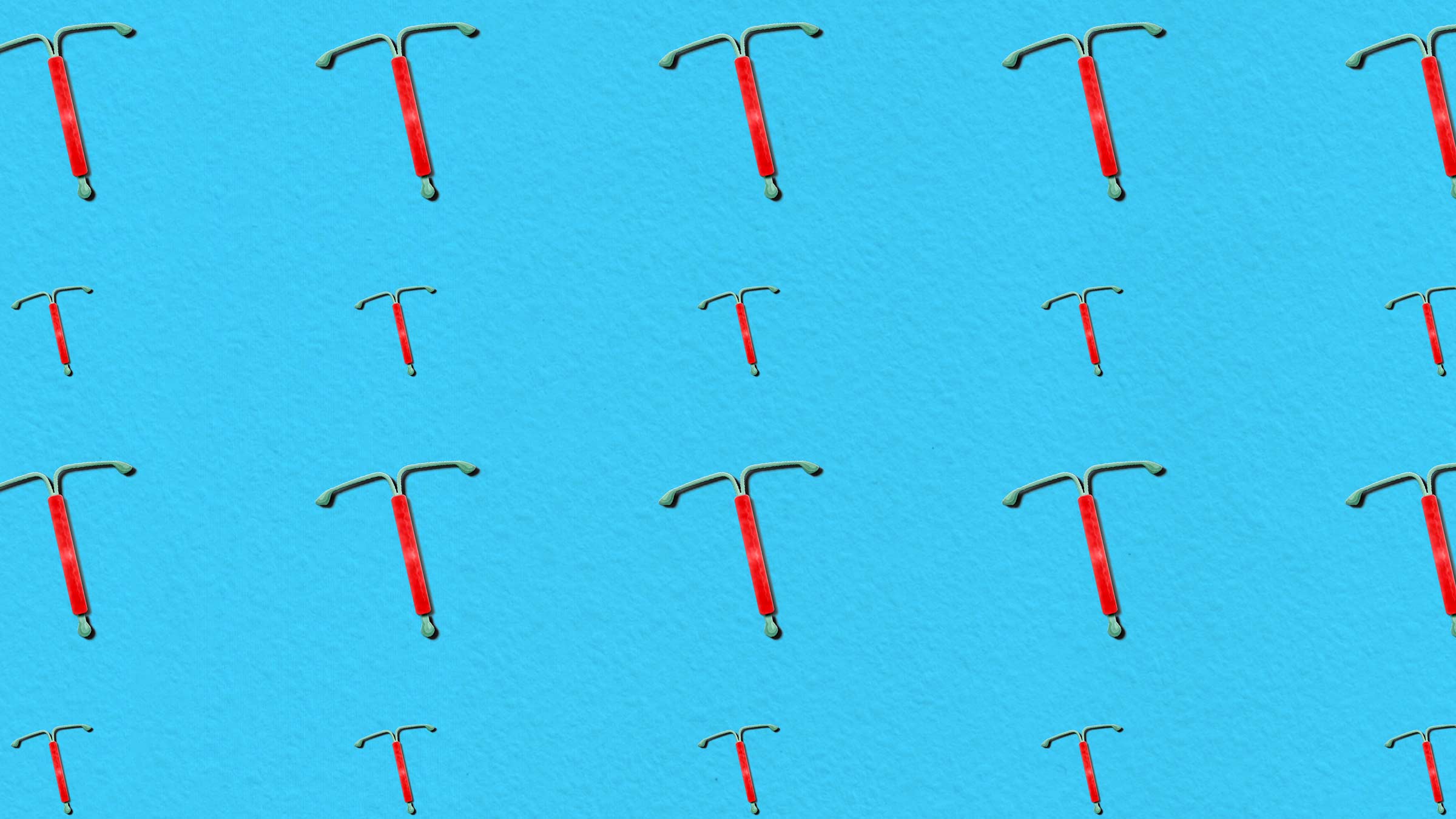
An intrauterine device (IUD) is a highly effective, reversible tool for preventing pregnancy. Many people prefer an IUD over oral contraceptives because they’re low maintenance. Once inserted, you can go about their daily life without needing to think about birth control. Depending on the type of IUD, the device can last for several years before needing to be replaced.
Starting any type of birth control is a personal decision, and an IUD may not be right for everyone. It’s important to have a discussion with your health care provider about what you’re looking for in a birth control method and choose the option that best fits your individual needs.
How is an IUD inserted? Can an IUD fall out?
The IUD has a plastic frame with a T-shaped design. The outstretched arms hold the device in place within the uterine cavity, but the IUD doesn’t directly attach to the uterus.
While it’s possible for an IUD to fall out on its own, it’s uncommon and occurs in fewer than 10% of cases. An IUD expulsion is more likely for people who have exceptionally heavy menstrual bleeding, those who had the IUD inserted immediately after a vaginal delivery, people who have had multiple vaginal births, and people who are overweight or obese.
Can I feel my IUD?
If the IUD is inserted correctly, you won’t feel the plastic frame and your partner won’t feel it, either.
The device also has strings that go through the cervix and stay in the upper vagina. The strings are there so your provider can easily remove the IUD when it’s no longer needed or wanted. It’s normal to be able to touch the IUD strings with your fingers, but if they’re bothering you, your doctor can trim them.
It is safe to use tampons while the IUD is in place, and since tampon strings typically come out of the lower vagina to the outside, they shouldn’t be confusable with IUD strings. Plus, the IUD string is very thin and fine, while most tampons have braided, cotton strings.
Does getting an IUD inserted hurt?
Having an IUD placed can be painful for some patients. I offer my patients different options for pain control, including taking ibuprofen before the insertion and putting numbing medicine into the cervix before placing the IUD. It’s normal for patients to experience cramping or discomfort for the first few days or weeks after having the IUD placed, but this typically subsides over time.
It’s very uncommon for IUDs to move once inside the body, but if the device is in an abnormal position, it’s likely due to a complication that occurred at the time of insertion. Extra pain, irregular or heavy bleeding, and cramping can be signs the IUD wasn’t correctly positioned inside the uterus. If these symptoms occur, it’s important to follow up with your health care provider.
How does an IUD work? Do IUDs stop periods?
There are two types of IUDs: hormonal and hormone-free. A copper IUD, also known as ParaGard, doesn’t contain any hormonal component. With this kind of IUD, patients can expect their periods to arrive on the same schedule as usual. However, bleeding may be heavier with more cramping, especially for the first few months after insertion.
Hormonal IUDs contain a low dose of levonorgestrel, which is a progestin hormone. Menstrual bleeding may be irregular at first, but over time, patients can expect their periods to get lighter or stop altogether. This is safe, and often a desirable outcome for people who previously had heavier periods.
The hormone level in this type of IUD is much lower compared to birth control pills, and most patients tolerate it well without side effects. However, mild side effects may include acne, weight changes, headaches and mood changes, though again, these are uncommon.
IUDs do not affect fertility. Once removed, fertility returns to its baseline within a month or two.
Can I get pregnant with an IUD?
IUDs are more than 99% effective at preventing pregnancy, meaning it’s exceedingly rare to conceive with an IUD in place. If you do become pregnant while the IUD is in place, it’s important to see your health care provider and assess the location of the pregnancy and of the IUD.
It’s advisable to use a backup form of contraception, such as condoms, for the first week after getting an IUD inserted. It’s also important to remember that an IUD doesn’t provide protection against sexually transmitted diseases.
It is important to know that although the IUDs last a long time, they don’t have to stay in for that long. If you decide you want to become pregnant, experience bothersome side effects, or just decide you don’t want the IUD anymore, your health care provider can remove it at any time.






